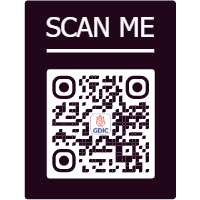
Diagnostic imaging is a great tool in the medical field for diagnosis and prognosis. By the medium of this blog, We will discuss various types of imaging techniques and their individual side effects and risks that they might pose.
The diagnostic imaging techniques have proved to be of great use in determining, diagnosing diseases and conditions and thereby helping in an effective treatment plan delivery for both children and adults. There are several diagnostic tools such as CT Scan, PET Scan, MRI scan,.X rays and Ultrasound. Some of these imaging techniques use ionizing radiations posing greater risk and some of them don't. Ionising radiation has the energy that can cause potential damage to DNA which may lead into cancer development. Individual size effects and risks are mentioned below.
What Are the Side Effects and Risks of an X-Ray?
The x-rays are conducted under safety guidelines and the guidelines recommended by scientists and researchers still there are certain side effects which might occur which are as below-
There can be some short term side effects with high radiation levels such as
- Vomiting
- Nausea
- Dizziness
- Lightheadedness
- Fainting
- Slight hair loss
- Loss of skin and hair
- Slight bleeding
There can be certain severe and dangerous side effects which may include
- Cancer development due to DNA damage
What Are The Side Effects Of CT/CAT Scan?
A CT Scan is also known as Computed tomography. A CT Scan uses ionising radiation and a computer to create and display detailed images of the inside of the body and its organs. Although it is painless and quick diagnostic technique but there are certain side effects that it might pose which are as mentioned below-
- The CT Scan uses ionising radiation, which can cause DNA damage. The DNA structure damage can cause carcinogenic growth of the cells, leading to cancer development. Generally, the CT Scan is conducted by following the safety guidelines and by trained professionals so as to pose minimal risk or side effects.
- If you are pregnant, or suspect that you are pregnant, you should inform your doctor before the scan. Because the unborn child is more susceptible to ionising radiation and might lead to causing some birth defects in your child. A CT Scan is done in pregnancy only when indicated and necessary. There are several alternate options that can be used to minimise the risk of ionising radiations such as MRI scan, Ultrasound.
- If you had undergone a contrast-based CT Scan, it is possible that you might develop an allergic reaction to the contrast dye,mild and moderate reactions to the contrast dye are managed by administering medications. But severe allergic reactions can lead to vigorous and comprehensive hospital care. The reaction can develop due to certain components in the contrast dye such as iodine. You should always inform if you feel you have developed some allergic reaction such as
- Pain
- Redness
- Swelling
- Itching
- Heaviness
- Red patches
- Patients who have some kidney disease such as kidney failure or other kidney problems should inform their healthcare provider. In some cases, the contrast dye may cause your kidney failure especially if you are on diabetic medications such as glucophage.
- If you have undergone NCCT chest/ chest CT Scan, and you have certain medical meta devices placed you need to inform your doctor beforehand which might include
- Body piercings
- Cardiac pacemaker
- Stents
- If you have had recent radium studies
The Risks of PET Scan
The PET scan (positron emission tomography) is a Scan which can produce and display 3 dimensional images of the body and its organs. These detailed pictures show the area with its functioning. A PET scan can detect any abnormal activity in the cells. It is a great diagnostic tool in diagnosing cancer, cause of epilepsy, dementia or others. The PET scan uses ionising radiation. Although the ionising radiation carries very small risk of posing any damage to the tissue, most of the scans are performed following safety guidelines. The things that you might need to be aware of if we talk about the risks of PET scan are as mentioned below-
- You should drink plenty of water after the scan, the contrast-based study uses contrast which happens to stay in your body for a few hours after the scan. Although the contrast can get flushed out by itself completely but drinking plenty of water fastens the process.
- As a precaution, you should stay away from children and pregnant ladies for a few hours and try not to make close contact because children and unborn children are more susceptible to radiation and you might be slightly radioactive even after the PET scan.
- You might develop allergic reactions to contrast medium which might include
- Itching
- Pain
- Redness
- Warm skin
- Burning sensation
- Difficulty breathing
- Sometimes a life threatening reaction might happen known as anaphylaxis
- Nausea
- Vomiting
- Headache
- Dizziness
- Lightheadedness
- discomfort
All of the above symptoms usually go away within a few hours after the scan, but if they persist it is of major concern/it is always safe to inform your doctor or healthcare provider as soon as you feel the first symptom.
What Are the Side Effects And Risks Associated with an MRI scan?
Magnetic resonance imaging (MRI) scan is the safest test when it comes to the side effects that are posed due to ionising radiations. The MRI scan does not use ionising radiation for image production and display but uses strong magnets and radio waves instead. Although it is a plainless technique , there are certain risks it might pose and there are certain considerations you need to keep in mind which are mentioned below-
- An MRI Scan usually does not include any radiation, hence it does not pose any radiation related risk as such, also it is a painless and quick exam.
- Certain MRI scan exams might include contrast dye injection which may cause an allergic reaction,mild and moderate allergic reactions either usually resolve themselves or they might need some medication. For a severe allergic reaction you need to be monitored and delivered proper care. Hence it becomes utmost important that if you face any allergic reaction you should inform your doctor or the healthcare provider immediately. The allergic reactions usually start by redness, swelling, itching and pain. Allergic reaction include
- Itching
- Pain and discomfort
- Redness
- Burning sensation
- Difficulty breathing
- life threatening reaction might happen known as anaphylaxis
- Nausea or Vomiting
- Headache
- Dizziness and Lightheadedness
- If you are pregnant you should tell your doctor since MRI scan is not done while you are pregnant even though there are no evidence of an MRI scan causing harm to the unborn child
- If you have any kidney disease already, it might get worse and cause nephrogenic sclerosing fibrosis which is a rare disease. Your doctor usually checks your status before the MRI scan.
- There is a slight chance of the contrast dye getting deposited in your body especially into your brain, although the buildup has not been proven, the FDA has also not restricted the use of contrast dye.
Conclusion
Advanced diagnostic tools are of a great use when it comes to visualising, diagnosing and treatment planning. Which in turn yields better prognosis. Although they contain certain risks, the benefits and aids that it offers weigh more. Several diagnostic centres offer cost friendly scans with a guaranteed credibility in their results and reports. Always opt for a credible diagnostic centre near you.










